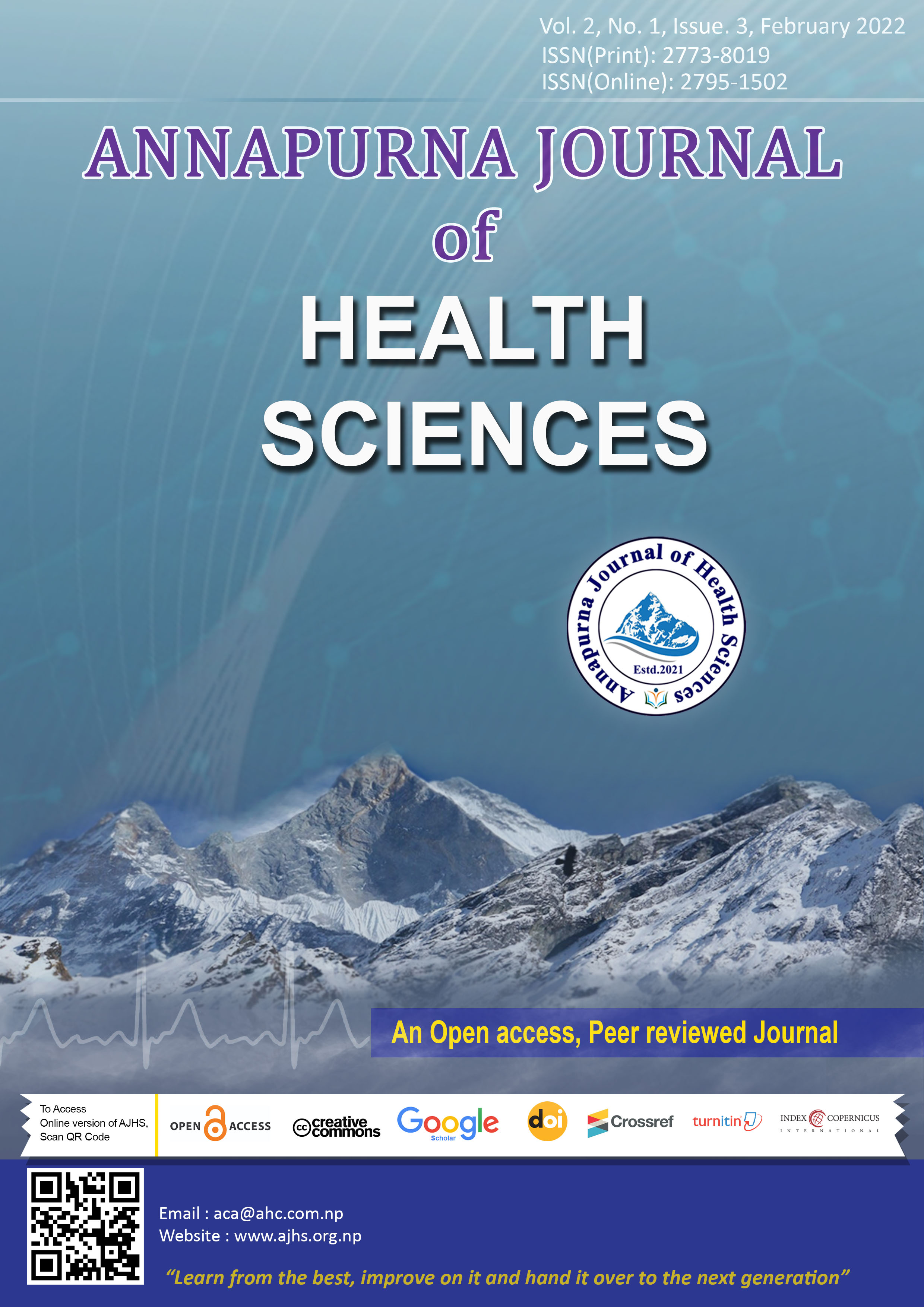Our Excursion with Surgical Conduct for Craniopharyngioma
Keywords:
Craniopharyngioma, Outcome, ResectionAbstract
Background: Craniopharyngioma, an epithelial tumor believed to arise from
the remnants of Rathke’s pouch, portray approximately 1.2%-4.4% of all
intracranial tumors. Due to its inherent domain in the skull base and its liaison
with indispensable neurovascular structure, it has still remained an intimidating
contest despite an improved dexterity among the neurosurgeons and refinement
in neurosurgical gadgetry.Surgical corridor to come down in favor for is elected
by the position of optic chiasm, extension of tumor and development of ACoM
or ACA (A1).
Methods: A retrospective series study was conducted at Annapurna Neurological
Institute and Allied Sciences between January 2016 and August 2021. A
total of 20 patients who underwent surgery for histopathologically proven
craniopharyngioma was enrolled. Majority of the surgery was performed via
a pterional approach while two cases were addressed with a supra ciliary
approach and one with a trans nasal trans septal transsphenoidal approach.
Result: The age of presentation among our study group ranged from 5 years to
46 years with a mean age of 28.2 years.The most frequent mode of presentation
was headache associated with visual disturbances (visual acuity and visual field).
Histopathological analysis disclosed an admantinomatous variant 15 cases and a
papillary type in 5 cases. The use of Ommaya reservoir in few selective cases was
escorted by the cystic ingredient of the lesion. An endeavor to aggressive surgical
approach was accomplished, amidst, excision of tumor was subtotal in 9 %, near
total in 36 % and gross total in 45 %. Diabetes insipidus was seen in 36%. We
had to endure a case of mortality, who lamentably had a massive sub-arachnoid
hemorrhage with a colossal PCA territory infarction on arrival. Post operatively,
the mass effect evolved on account of PCA territory infarction.
Conclusion: The magnitude of resection of the tumor is affected by the extension
of tumor, consistency of the lesion and position of optic chiasm. Even with an
extensive resection, the prospect of recurrence is inordinately high.
Downloads
Downloads
Published
How to Cite
Issue
Section
License

This work is licensed under a Creative Commons Attribution 4.0 International License.
This license allows reusers to distribute, remix, adapt, and build upon the material in any medium or format, so long as attribution is given to the creator. The license allows for commercial use.




